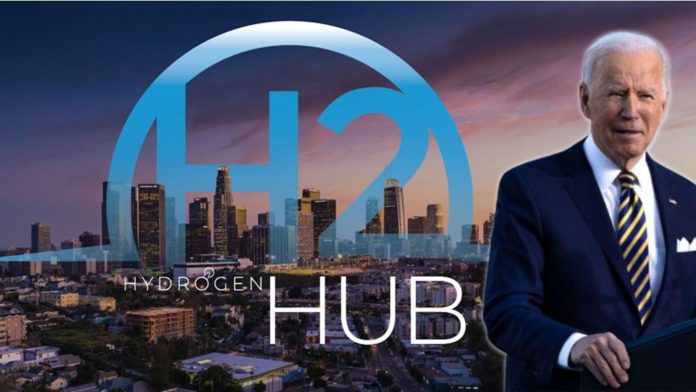Senior administration officials at the White House have stated that U.S. Department of Energy Secretary Jennifer Granholm and President Joe Biden unveiled seven regional “Hydrogen hubs,” stretching across 16 states, that will be eligible for up to $7 billion in federal funding.
The funding for these hydrogen hubs comes from the Bipartisan Infrastructure Law, signed by President Biden in November of 2021.
Despite being the most common and abundant element on earth, hydrogen typically requires splitting from other atoms to exist in its pure form. Another method for producing hydrogen from natural gas is steam methane reforming.
Hydrogen is currently included in the Biden administration’s plan to cut greenhouse gas emissions since it burns without emitting carbon dioxide. Senior white house administrators said the federal funding will be distributed as the regional hubs meet incremental milestones.
The seven hydrogen hubs span over 16 states and are arranged geographically based on regions that are particularly strong in advancing and expanding the hydrogen industry in the U.S. “Hubs” refers to a group of interconnected assets rather than a single facility that will cooperate to reach the U.S. domestic hydrogen economy.
Senior administration officials in the White House have stated that the $7 billion in federal funds will catalyze an estimated $43 billion in private-sector investment.
Senior White House officials said the federal funds will be distributed as the regional hubs meet stage-gate goals. But as Biden has often touted as a co-benefit of building the clean economy, all manufacturing clusters will promote job development.
The seven selectees are:
- The Appalachian Hydrogen Hub, which encompasses parts of West Virginia, Southeast Ohio, and southwest Pennsylvania, will use the region’s large quantities of natural gas.
- The California Hydrogen Hub spans from Southern California to Northern California and encompasses three ports: Los Angeles, Long Beach, and Oakland.
- The Gulf State Hydrogen Hub will center in Houston, Texas, covering most of the Gulf Coast and southeast Texas.
- The Heartland Hydrogen Hub is hosted in Minnesota. It includes a significant presence in North Dakota and South Dakota and uses inexpensive and abundant wind resources to make clean hydrogen.
- The Mid-Atlantic Hydrogen Hub spans parts of Pennsylvania, Delaware, and New Jersey and will take advantage of repurposed infrastructure along the Delaware River.
- The Midwest Hydrogen Hub is in Illinois, northwestern Indiana, and southwestern Michigan and will produce hydrogen from, among other sources, nuclear power.
- The Pacific Northwest Hydrogen Hub encompasses eastern Washington, northeastern Oregon, and some parts of Montana and will produce hydrogen for making fertilizer.



